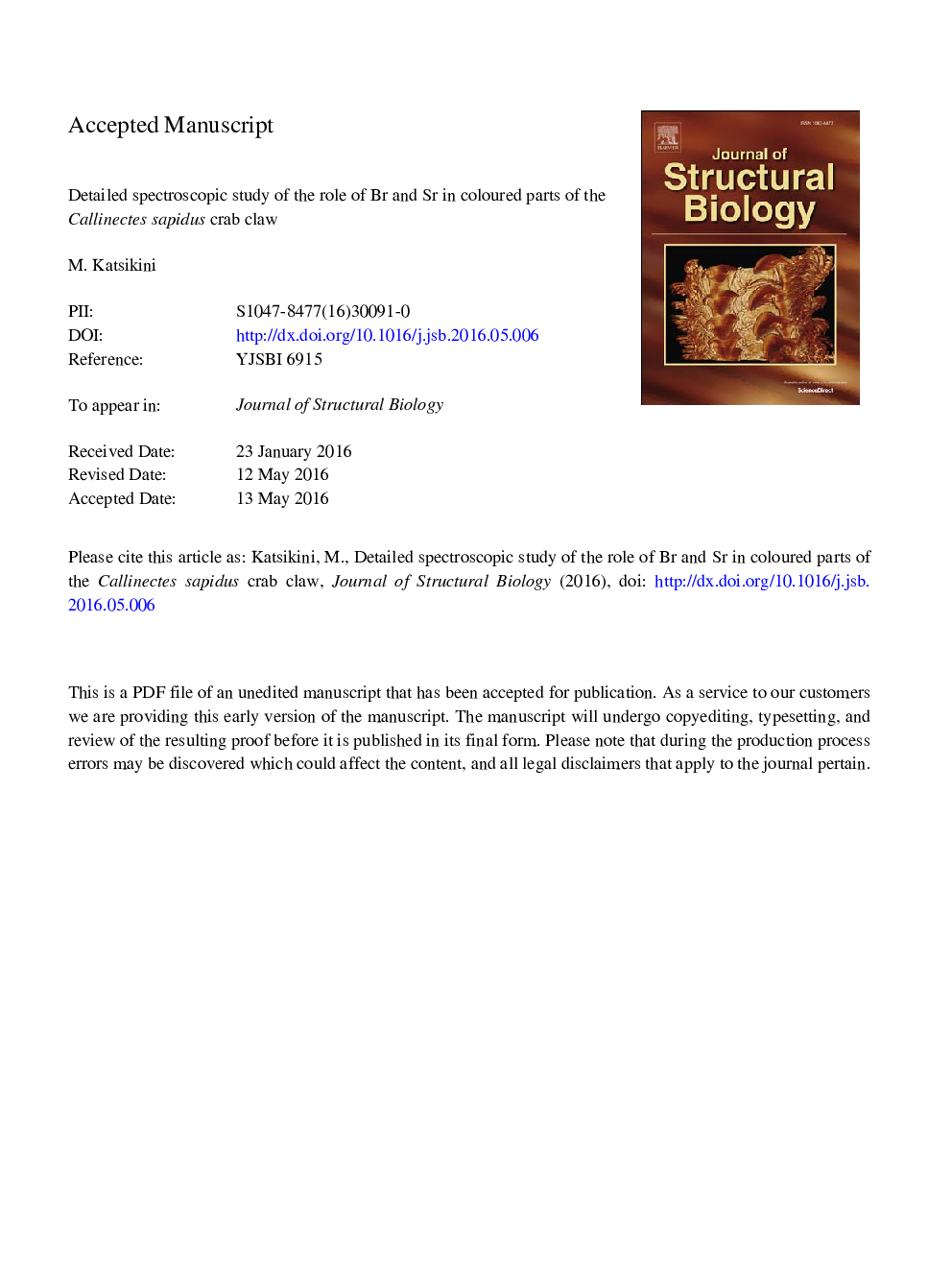| Article ID | Journal | Published Year | Pages | File Type |
|---|---|---|---|---|
| 5913715 | Journal of Structural Biology | 2016 | 30 Pages |
Abstract
The exoskeleton of crustaceans consists mainly of calcium carbonate (CaCO3) minerals and in many cases exhibits vivid colouration due to the presence of proteins rich in carotenoid chromophores. The exposure of aquatic animals in sea water results often in the incorporation of trace elements in their exoskeleton. The bonding configuration of Br and Sr trace elements in regions with different staining (white, orange and blue) of the exoskeleton of the Callinectes sapidus in crab claw are systematically investigated by a number of complementary spectroscopic techniques, including X-ray absorption fine structure spectroscopy (EXAFS), X-ray fluorescence, Raman and visible light reflectivity spectroscopies. It is found that Sr substitutes for Ca and the Sr/Ca ratio is constant along the claw. In the orange region that includes the claw fingers, CaCO3 adopts a calcite-like structure, whereas in the blue and white regions, located in the palm of the claw, an aragonite-like structure dominates. On the other hand, Br, present only in the blue and orange stained parts of the claw, is bound to phenyl and/or phenol rings of amino acid residues, most probably to phenylalanine and/or tyrosine, of the chromophore protein.
Keywords
Related Topics
Life Sciences
Biochemistry, Genetics and Molecular Biology
Molecular Biology
Authors
M. Katsikini,
